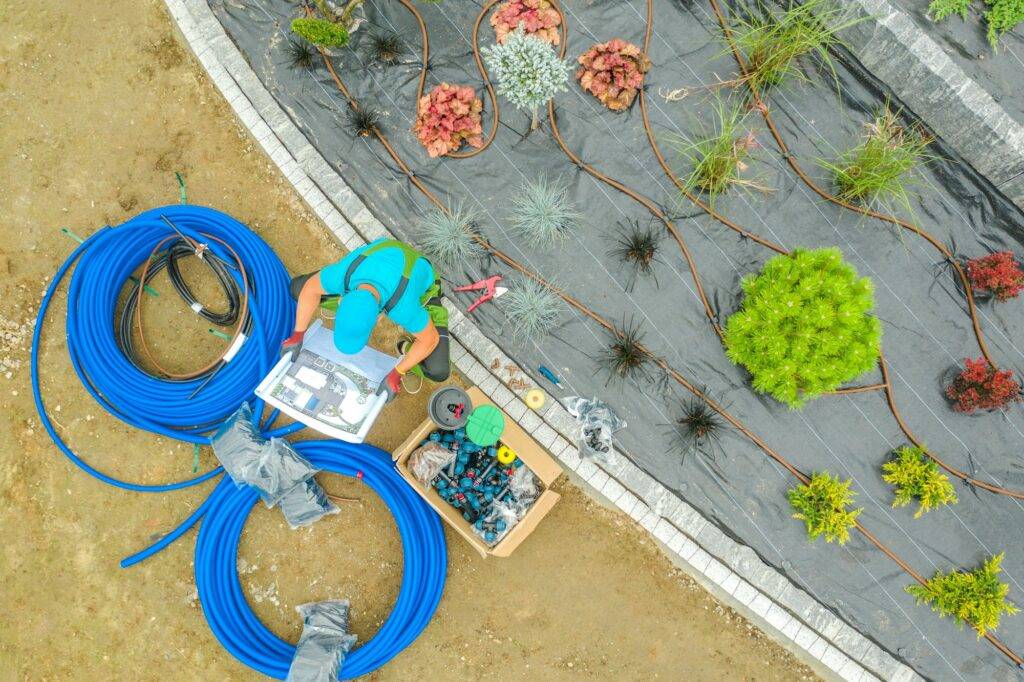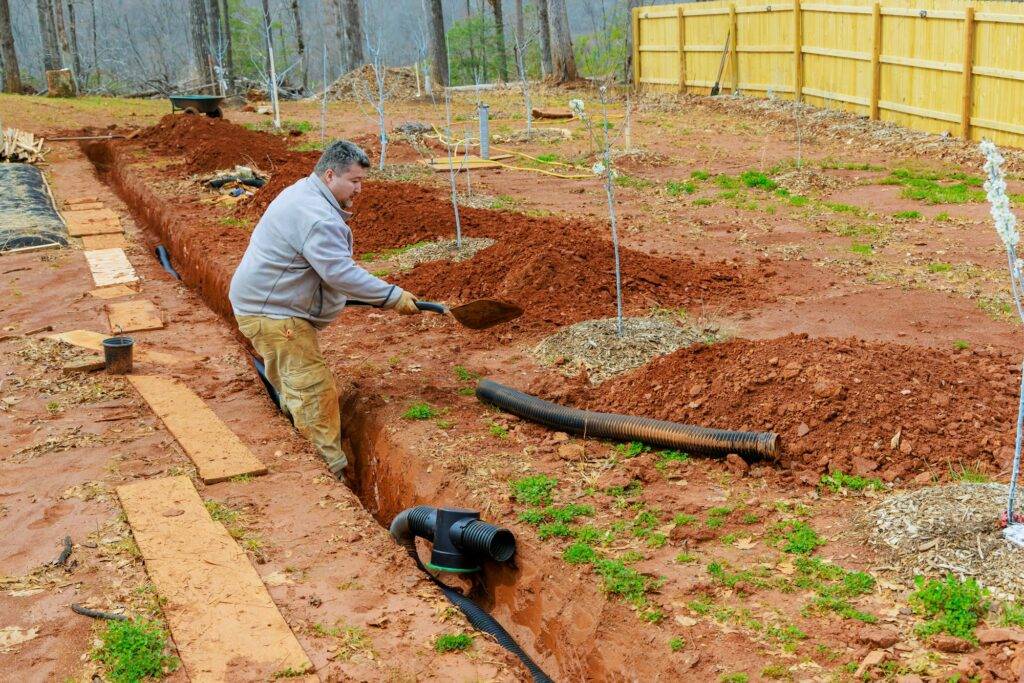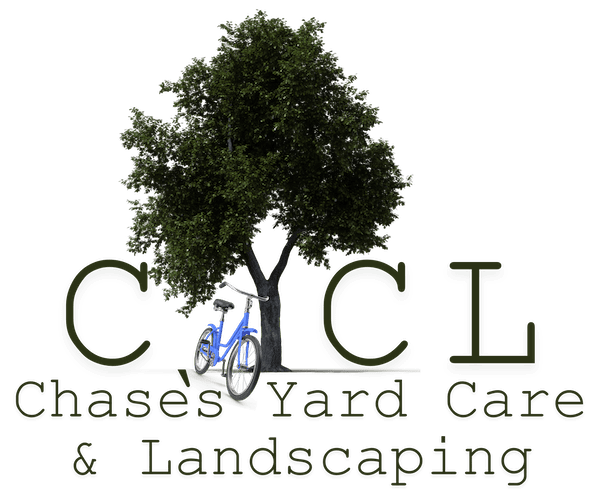Irrigation, Sprinkler and French Drain Specialist
Chase’s Yard Care and Landscaping is the Premier Irrigation Specialist and Sprinkler Installation service for Mont Belvieu, Baytown, Houston, Anahuac, La Porte, Seabrook and the surrounding South East Texas areas.
Chase’s Yard Care and Landscaping is the Premier Irrigation Specialist and Sprinkler Installation service for Mont Belvieu, Baytown, Houston, Anahuac, La Porte, Seabrook and the surrounding South East Texas areas.
Irrigation, Sprinkler System and French Drain Installation
Is your sprinkler system not working? We can repair your system with highly experienced irrigators on our staff. If you don’t have a system and need one we can also help you with no problem. We offer high-quality systems for the yard and flower beds.


Sprinkler Systems
Sprinkler systems are an amazing additive to your outdoor areas. with irrigation your grass and bed areas thrive all year long. When things are healthy the environment will be an around more enjoyable place to be.
Landscaping Irrigation
Irrigation is also great for the foundation of your home or structures.
French Drain Installation
When there are those hard to navigate areas where the water can’t drain on its own, a drain is necessary. Drains can make light work and prevent from major dirt work or other construction to be done when the water isn’t draining right.
Lawn and Garden Irrigation Frequently Asked Questions
In Texas, where water conservation is crucial due to the hot and often dry climate, the best irrigation methods include drip irrigation, soaker hoses, and smart sprinkler systems. Drip irrigation delivers water directly to the roots of plants, minimizing evaporation and runoff. Soaker hoses work similarly by slowly releasing water along their length, ensuring even distribution. Smart sprinkler systems are also effective as they can be programmed to adjust watering schedules based on weather conditions, reducing waste. These methods ensure that water is used efficiently and plants receive the hydration they need without overwatering.
The frequency of watering your landscape in Texas depends on the season, type of plants, and soil conditions. During the hot summer months, it’s generally recommended to water lawns and gardens deeply but infrequently—about 1-2 times per week. This encourages deep root growth, making plants more drought-resistant. In cooler months, watering can be reduced as plants require less moisture. Native and drought-tolerant plants may need even less water. It’s important to adjust your irrigation schedule based on rainfall and to avoid watering during the hottest part of the day to minimize evaporation.
Water conservation in Texas landscapes can be achieved through several practices. First, choose native and drought-tolerant plants that require less water. Mulching around plants helps retain soil moisture and reduces the need for frequent watering. Installing a drip irrigation system or using soaker hoses can significantly cut down on water usage by delivering water directly to plant roots. Consider reducing lawn areas, which are often the most water-intensive, and replace them with drought-resistant groundcovers or hardscaping. Lastly, collect rainwater in barrels for use in your landscape, and ensure your irrigation system is equipped with rain sensors to prevent unnecessary watering.
Smart irrigation systems offer numerous benefits, particularly in Texas, where water conservation is essential. These systems are equipped with sensors and weather data that allow them to adjust watering schedules based on real-time conditions, such as rainfall, temperature, and soil moisture levels. This ensures that your landscape receives the right amount of water, reducing waste and preventing overwatering. Smart systems can also save money by lowering water bills and reducing the need for costly water use penalties during drought restrictions. Additionally, they are convenient, as they can be controlled remotely via smartphones, allowing for easy adjustments even when you’re not on the property.
Preventing overwatering in your Texas landscape involves careful monitoring and using the right irrigation tools. Start by setting your irrigation system to water deeply but less frequently, encouraging deep root growth. Use a rain gauge or soil moisture sensor to determine when watering is necessary. Installing a smart irrigation system with rain sensors can automatically adjust or skip watering cycles when there’s sufficient moisture. It’s also important to regularly inspect your irrigation system for leaks or malfunctions that could lead to overwatering. Additionally, educate your maintenance staff on the signs of overwatering, such as yellowing leaves or soggy soil, and adjust the schedule accordingly.
Xeriscaping is a landscaping method that focuses on water conservation by using drought-tolerant plants and efficient irrigation techniques. In Texas, xeriscaping is particularly effective due to the state’s hot and often dry climate. To apply xeriscaping principles, start by selecting native and drought-resistant plants that thrive with minimal water. Design your landscape to group plants with similar water needs together, allowing for more efficient watering. Replace large, water-intensive lawns with drought-tolerant groundcovers, gravel, or mulch. Incorporating efficient irrigation systems, such as drip irrigation, further reduces water use. Xeriscaping not only conserves water but also lowers maintenance costs and creates a sustainable, eco-friendly landscape.
To ensure your irrigation system remains efficient in Texas’s varying weather conditions, it’s important to choose a system that can adapt to changes in temperature, rainfall, and humidity. Smart irrigation controllers are ideal, as they automatically adjust watering schedules based on real-time weather data. Regularly inspect and maintain your system, checking for leaks, clogs, or broken components that could reduce efficiency. It’s also advisable to zone your irrigation system according to the specific water needs of different areas in your landscape, such as lawns, flower beds, and shrubs. Lastly, consider installing rain sensors or moisture meters to prevent unnecessary watering during wet periods.
Common irrigation mistakes in Texas include overwatering, improper system installation, and neglecting regular maintenance. Overwatering is often due to watering too frequently or during the hottest part of the day, leading to wasted water and unhealthy plants. To avoid this, water deeply and less often, and set your system to water in the early morning or late evening. Improper installation can result in uneven water distribution, causing some areas to be overwatered while others are under-watered. Ensure your system is professionally installed and properly zoned. Neglecting maintenance can lead to issues like leaks, clogs, or broken sprinkler heads. Regularly inspect and maintain your system to ensure it operates efficiently.
Choosing the right irrigation system for your Texas property depends on the size of your landscape, the types of plants you have, and your water conservation goals. For larger properties, a combination of smart sprinklers and drip irrigation may be ideal, as it allows for efficient watering of different zones. Drip irrigation is particularly effective for gardens, flower beds, and shrubs, as it delivers water directly to the roots. If you have a lawn, consider a sprinkler system with adjustable heads and smart controllers. For properties focused on sustainability, a xeriscape design with minimal lawn area and drought-tolerant plants paired with a drip system is highly effective. Consulting with an irrigation specialist can help you design a system that meets your specific needs.
Rainwater harvesting is an excellent way to supplement your irrigation needs in Texas, where water conservation is vital. To integrate rainwater harvesting into your landscape, start by installing a rainwater collection system that captures runoff from your roof and stores it in tanks or barrels. This water can then be used to irrigate your landscape, reducing your reliance on municipal water supplies. Connect your rainwater storage system to a drip irrigation or soaker hose setup to efficiently water plants. It’s important to filter the collected water to remove debris and contaminants before use. Additionally, designing your landscape to include rain gardens or swales can help capture and utilize rainwater directly in the soil, further enhancing water conservation.
